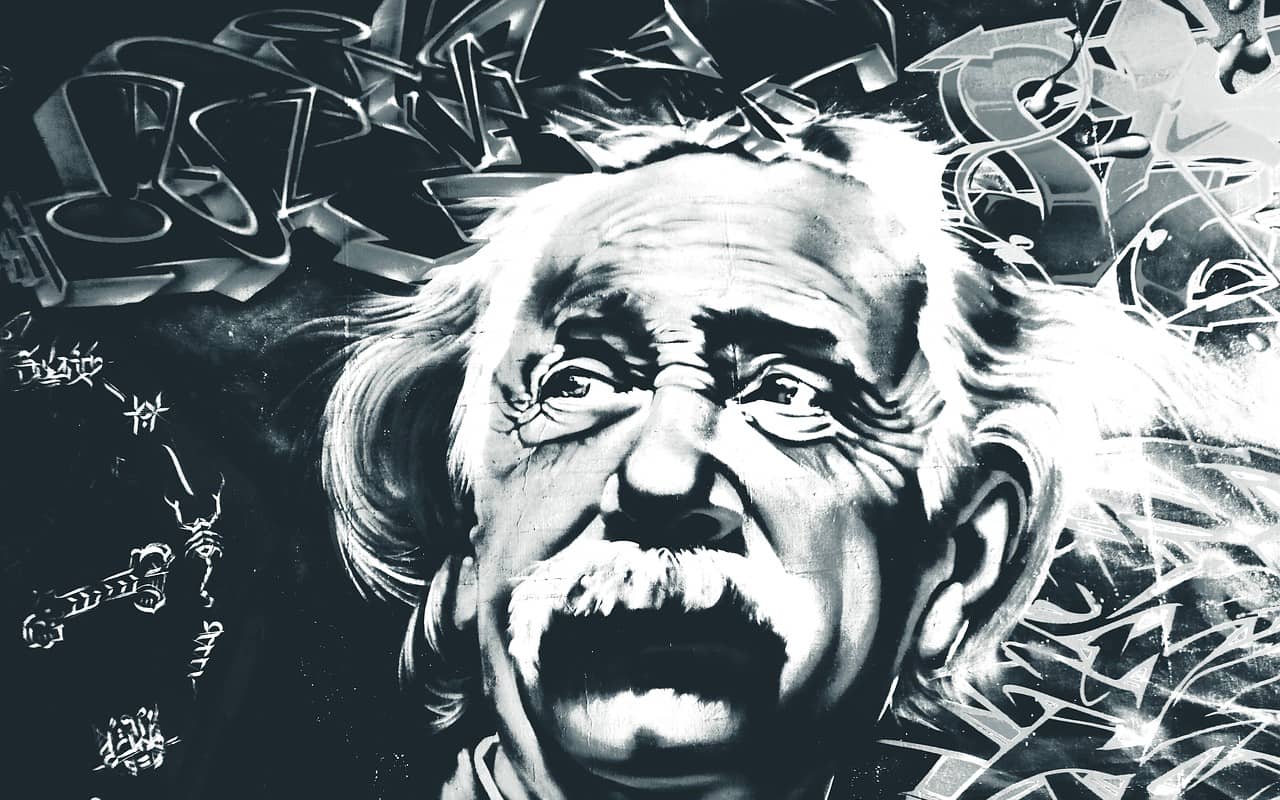Podcast: Download
Subscribe: Apple Podcasts | RSS
 If you want to improve your ability to visualize, think clearly and remember more, proper image streaming is important.
If you want to improve your ability to visualize, think clearly and remember more, proper image streaming is important.
The best part is that you can learn to do stream images properly even if you do not have a strong “mind’s eye.”
What’s the point of image streaming – and doing so in a better way?
Well, just imagine being able to experience more of your inner genius on demand.
Develop that ability and soon you’ll enjoy reading much more (including complicated books).
Plus, your mind won’t feel so overwhelmed when you can instantly use mental imagery to focus on demand.
In this post, I’ll actually teach you two different kinds of image streaming: passive and active. I used both while studying for my PhD at York University, and it remains one of my favorite practices in my writing and teaching career.
Ready?
Let’s get started.
What Is Image Streaming?
A lot of people attribute the streaming image concept to Win Wenger.
Sure, Wenger wrote about it in a book called The Einstein Factor. Wenger defines the practice like this:
“Image-Streaming consists of describing aloud, in as much detail as possible, to a live listener or an audience, or to a tape recorder as potential audience — while observing the ongoing stream of sensory imagery of all kinds.”
Although there are some great things about Wenger’s book, it’s also packed with pseudoscience. And although it has some merit, I don’t fully agree with this particular definition of image streaming.
Perhaps more alarmingly, there’s a stunning lack of awareness about Einstein.
For one thing, Einstein is not known to have considered himself a genius. He probably had no time for such imprecise terms. If you’ve read The Unexpected Einstein, you’ll be aware of just how humble Einstein was about his discoveries.
As Walter Isaacson shows in Einstein: His Life and Universe, Einstein had every reason to be modest. He’d actually borrowed the imagery he “streamed” from Aaron Bernstein.
This was the influential author who “took his readers on an imaginary journey through space.” He also “asked readers to imagine being on a speeding train” as a bullet was shot through the window.
Was imagine streaming part of how Einstein formulated the equations involved in general relativity?
Absolutely not.
“Image streaming” is a term Wenger apparently invented (if you can call putting two preexisting words together an act of invention). If anything, Einstein was mentally replaying images and concepts from Bernstein.
This does not diminish Einstein’s accomplishments. Rather, it places them in context and allow us to ask a better question:
Did Einstein use an image visualization technique to arrive at his conclusions? Absolutely.
And you can too. We just want to be a bit more historically accurate and scientific about the process so we can get started on the best possible footing.
One way to instantly “stream” better while reading the claims people make, such as the one above, is to use active reading strategies. Although you might not wish to call them streaming, a lot of them will certainly get you into a similar state of flow.
The Deep History Of Image Streaming
I don’t want to go back to the beginning of time, but we know that humans have been visualizing for a very long time.
And if you are visualizing for more than a few seconds, that experience is… “streaming” from one second to the next.
Who has streamed imagery perhaps more than any other group?
Ancient Indian yogis. Buddhist monks. Dominican priests and practitioners of hermeticism. Modern teachers of positive visualization.
For each of these groups, the ability to sit and focus on mental imagery has been key to allowing ideas to arise and for expanding the mind.
For more details on how visualization was used in different periods of history, you can check out texts like:
- Pratyabhijñā (see The Recognition Sutras, a translation with commentary by Christopher Wallis and specific exercises that involve image streaming from Shaivism)
- The use of Mandalas and visualization sutras in a number of Buddhist schools and some koans in various schools of Zen
- Ars combinatoria in Hermeticism
And there is so much more.
Image Streaming And Pseudoscience
Now, you might be thinking… didn’t you just accuse Win Wenger of pseudoscience? Aren’t all of these ancient traditions also linked with woo-woo?
Well, yes and no. For one thing, Wenger says image streaming will increase your IQ.
This claim is highly dubious, and I doubt that any of the traditions listed above have ever claimed image streaming will help in this regard. That said, when combined with active recall, image streaming will certainly help you remember various kinds of information much better.
Second, we have tons of research demonstrating just how powerful practices like deity meditation are for enhancing the efficiency of your visuospatial processing. You’ll also want to check out the summaries of many scientific studies and brain scans in Andrew Newberg and Robert Waldman’s How Enlightenment Changes Your Brain.
Finally, the positive experiences I had with image streaming using the Memory Palace technique have been confirmed many times over.
See for example the exhaustive research conducted by Dr. Tim Dalgleish.
Dalgleish has shown how “streaming” positive memories can relieve clinical depression – which is exactly what happened to me years before I knew such studies existed.
How To Practice Image Streaming
As Wenger describes it, image streaming involves observing and describing mental experiences.
I would rename this process “passive image streaming.”
All you have to do is:
- Find a quiet place to practice, either seated or lying down
- Use a device to record your voice
- Talk about what you’re experiencing in detail, perhaps while performing these visualization exercises
- Use as many multi-sensory aspects of experience as possible
- Review the recording for any additional ideas it might trigger
I often use image streaming in real time when I can’t concentrate. For example, I will repeat in my own mind what people are saying and really make an effort to mentally experience their references.
In other words, if someone mentions a suspense novel, then I will think about a movie in the genre and an actor like Harrison Ford. The image streaming resulting from this simple practice has been tremendous for feeling more connected in conversations and remembering more about them.
What if you have aphantasia? You might want to try some of the processes I shared with AphantasiaMeow when we talked about using mind mapping as a potential aphantasia cure.
How To Practice Active Image Streaming
At the end of the day, bringing your efforts with streaming imagery together with a specific goal works a lot better.
And as I tell many people who ask me about this kind of visualization, the Memory Palace technique is one of the best ways to combine a goal with image streaming.
To get started:
- Choose something you want to remember (like vocabulary, songs, numbers or names)
- Use associations in the Memory Palace to help you memorize the information
- Use Recall Rehearsal to “stream” through the Memory Palaces
- Use multi-sensory associations as you proceed
If you need a bit of help getting started, please try this image streaming guided meditation:
As an alternative, you can try Dr. Gary Small’s four details exercise. I use it as a brain exercise a few times a week and it’s very powerful for practicing visualization and exercising memory at the same time.
How To Make Active Image Streaming Multi-Sensory
To enact this tip on multi-sensory image streaming, I like to follow a pattern I call KAVE COGS:
- Kinesthetic
- Auditory
- Visual
- Emotional
- Conceptual
- Olfactory
- Gustatory
- Spatial
As you go through a Memory Palace or just think through things, always try to touch on each of those sensory experiences.
One of my favorite ways to stream in real time is to recite a long piece of literature, like the Ribhu Gita. I live streamed my recitation as a memory demonstration here:
As you can tell, the process is very peaceful and rewarding.
And one reason why is that I am experiencing multiple sensations using KAVE COGS as I go along. You can literally stream those sensations in that order, which is especially useful when trying to remember things you’ve memorized.
However, as this study shows, there’s a catch. Your outcomes from streaming images will be much more successful if they are tied to specific goals, ideally performance based goals.
In other words, it likely won’t help much if you envision yourself as a great philosopher. Rather, you would do better by image streaming yourself showing up to study philosophical books and then actually showing up to do it.
Another way to look at this factor is to think about your willingness to not only stream, but to do. As these researchers of visualization for academic performance concluded, future research on streaming goal-oriented mental imagery will do much better if they involve participants who have shown at least some level of willingness to implement.
If you’d like to learn how to memorize anything, learn how to master the Memory Palace for this kind of image streaming here:
The Real Benefits Of Streaming Image After Image
Some people might think I’ve been a bit sour in this post by pointing out issues in Wenger’s use of the term “image streaming.”
However, I think it’s important, and maintain that skepticism is one of the great keys to remembering better.
I rarely use passive image streaming myself because it happens to us all the time anyway. Our minds wander and we get lost in fantasy. Sure, you can initiative this kind of mind wandering intentionally during a visualization meditation, but typically we want to develop our focus, not weaken it.
So I prefer to switch the strange habit of “mind wandering” into a tool. When I notice I’m drifting during a conversation, I pull myself back by using the conversation itself as a catapult into image streaming.
And as I’ve hoped to show, many traditions stream imagery. They have done so for thousands of years. And as Lynne Kelly has shown in The Memory Code, the use of the Memory Palace is prehistoric. People have been using active image streaming for thousands of years.
So what do you say?
Are you ready to start experimenting with these two kinds of image streaming, passive and active?
Related Posts
- 5 Memory Palace Examples To Improve Your Memory Training Practice
Here are 5 Memory Palace examples that will improve your memory training practice quickly, even…
- Can You Trust Memory Vitamins To Boost Your Brain?
Are memory vitamins the secret to sharper memory? Read the truth about these vitamins, and…
- What Is Intrapersonal Intelligence? (And How to Improve Yours)
Intrapersonal intelligence is easy to understand when you have the best possible examples. Learn what…









10 Responses
Finally you are talking about image streaming!
I tried it for six months, but it never helped with aphantasia nor with anything else, absolutely no results for me.
Now I am doing something else for aphantasia.
As for image streaming and iq: there were some communities about that in the past, even though most of the members were not practicing, now these communities are much less active.
Variants of image streaming were created such as advanced image streaming and quantum wave streaming.
Advanced image streaming: you don’t use words anymore, but you just understand the features of the image by visualizing it.
Quantum wave streaming : you choose an object that you can physically see in front of you, you describe it and when you are done you close your eyes and start to visualize and describe it, like normal image streaming.
If you want more information about that, feel free to ask!
Thanks, Daniele.
For advanced streaming, if you still can’t see images, how do you drop words and visualize? Is it visualization alone, or are other senses accessed, such as touch, smell, sound, etc.?
This “quantum wave” streaming sounds like a very common meditation exercise. What’s so “quantum” about it?
Personally I have never tried advanced image streaming due to aphantasia.
All the senses are adressed here, even if the visual aspect is the protagonist. Personally it sound like a normal Visualization Meditation.
As for quantum wave streaming, I absolutely have no idea why it is called like that. Probably the creator of this variant wanted to sound cool, adding the word quantum in the name. Specifically, which meditation exercise sounds like quantum wave streaming?
Thanks for this.
I cannot imagine anything “quantum” coming into play in any meaningful way when it comes to the benefit of this mental exercise. But we’d have to hear from the person who gave it that name to hear the background – maybe they have a reasonable explanation.
Even if there is such a thing as “advanced image streaming,” I would suggest that leaving words out of it is hardly advanced at all. Words are images, both graphically and as they appear in the chemical bath of the brain. To leave them out sounds like poor thinking on the part of the person suggesting such a routine.
Words ARE images?
That is confusing to me. I thought that these were two separate thinking process.
That is why I think that doing image streaming didn’t work for me. I was focusing too much on words, so I was never trying to use my dormant mind’s eye.
Now I am doing this sort of visualization meditation:
I close my eyes, take a couple of deep breath, and I try to visualize myself walking around my town.
The interesting thing is that I do get visual data, despite not visualizing anything, For example, I know, without using words, in which part of the town I am in, which side of the road I am walking on, and so on.
I don’t know if this will work, but I am dreaming much more, almost every night, and those dreams are visual.
As someone who previously had aphantasia, do you think that I am on the right track?
I don’t know if there is a “right track” or even a “track” at all, Daniele. This is one of the key problems with those who have fallen into the aphantasia trap.
You see, right now you are reading words. How could they not be images? Your brain is processing images at the level of the letter. Not only that, but it is processing visual imagery, sonic imagery and logistical imagery. They are all images to the brain in the same way as we talk about a computer copying or burning a “disk image.”
The word “image” comes from Latin for “copy.”
In order for communication like we’re having now to occur, your brain needs to be able to essentially “copy” what I’m saying in the chemical bath of your brain so that it can process it.
For this reason, aphantasia cannot conclude that people do not have mental imagery because they are able to communicate and they use the images of words (based on the images of the alphabet) all the time.
Not only that, but I’ll give you a case in point from a private memory client I had who was trying to wrap his mind around how someone with aphantasia can use memory techniques like the Memory Palace.
At one point, we were talking and he shared a story about the movie Jaws and a parking lot where someone had quoted one of the movie’s most famous lines. We were talking about this with respect to how one can memorize names.
I asked him to reflect on what went on in his mind when he mentioned that memory about mentioning a movie in a parking lot.
He didn’t exactly have words to describe it, but he had described it. And he had perfectly recited the quote, “You’re gonna need a bigger boat.”
Then we talked about how that memory was pre-verbal. He could recite that same memory to me in a variety of ways, potentially an infinite number of sentence constructions, i.e. “Once upon a time, I was in a parking lot,” or “It was about two years ago when I was in a parking lot,” etc.
All of this required the memory of both the movie Jaws, specific words in the movie Jaws and a parking lot where someone quoted that line to him. The fact that words are the surface level way that we express in potentially infinite fashion singular events suggests that it can only be in an image (i.e. a copy) that we are able to remember and communicate at all.
And how we communicate is again through images (copies that are copied).
Now let’s look back at your question about being on the “right track.”
Even if you have no mind’s eye (an experience I am familiar with), you are using a highly visual metaphor. Not only that, but it is a kinesthetic metaphor because one can feel what it is like to be a train on a track – or a runner on a track, etc. You can also hear sounds associated with if you want.
So it is incredibly sad that some science articles that have gone viral have convinced a large number of people that they have no mental imagery. This is simply not possible and other studies have shown that the brains of those same people light up the same visual centers as anyone else when presented with stimuli.
If your dreams are visual and becoming increasingly visual, this suggests that you are waking up to the fact that you have been highly visual all along. If you write down your dreams, you are using a visual medium to help make them images (copies) that in turn strengthens both how they can be copied and produced in the first place.
And the big kicker of all will land when you realize that everything about this conversation is only and can only be “appearing” as a “copy” (image or image-cluster) in you – in your brain.
But “in” is itself just a concept that is conceptually copied by the very brain you conceive of as having the ability to perceive and contain images, the notion itself serving as an image.
Exciting revelations!
Your thoughts? 🙂
That is a lot of new information to understand, but I think I am getting the gist of it.
One thing that helped me was reading this article.
Basically it says that visualizations are created in the prefrontal cortex, then the data is sent to the visual cortex. The combination of these two processes generate the visualization.
I suppose that I am able to create the image in the prefrontal cortex, but the info is not sent to the visual cortex or is sent, but is not processed correctly by the visual cortex
This supposition is based on the fact that I do get visual info, and not words, while trying to visualize, despite not not visualizing in the proper way.
This article is good, but it somewhat buries the point. Its main virtue is that it takes care to place “sees” in quotation marks.
This is a very important distinction because there is no “mind’s eye” or any “seeing” going on at all in the imagination. We are using these words as metaphors for processes that we are trying to understand and unfortunately people are interpreting them to mean things and refer to processes that they do not.
I would caution you about creating suppositions about how your prefrontal cortex is or isn’t behaving, especially given the visual experience you’ve reported having in your dreams. From whence would your brain “get” visual info in this context?
Given this context, how is it possible for there to be a “proper way” to visualize?
The combination of our experiences as a conscious being experiencing consciousness is the visualization we seek.
Put it this way:
Trying to understand how the brain visualizes “images” (i.e. copies) is quite different than describing the experience of visualization. As the article states, there is going to be range. But the idea that there is an absence of mental imagery is patently false and it continues to break my heart that people go around in states of self-punishment over the miraculous fact that they can experience anything at all. Every experience of consciousness is tremendously precious.
To that end, image streaming is not merely about “improving” the experience of consciousness. It is also about noticing that it is happening in the first place, and the fact of its happening is incredibly rare, astonishing, and something every living being should feel extremely grateful for.
Thanks for being part of the conversation.
Hi,
I’ve seen this image streaming method used by sir Albert Einstein & Nikola Tesla (Biographical Movie). Sir Albert Einstein requests his friend to visualize a moving train & thunder storm to make his understand a theory or his concept.
Most of the times sir Nikola Tesla allowed himself to visualize or Image streaming (mental laboratory) for his DC or AC projects.
The Tesla connection here is very interesting. Thanks for mentioning it!
Have you tried any of the two forms of image streaming discussed on this page? I’m particularly interested in hearing from those who have directed it towards completing specific goals.